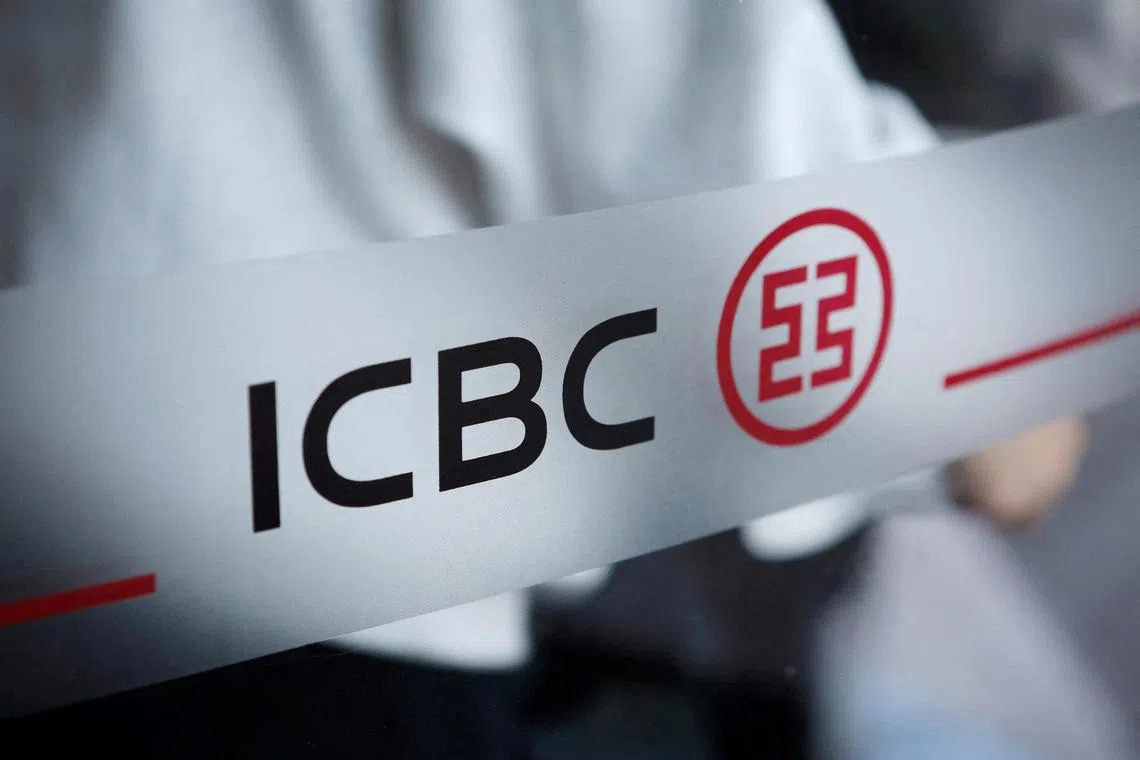China mega banks cut deposit rates, signalling more policy easing
Sign up now: Get ST's newsletters delivered to your inbox

Five major banks including the Industrial and Commercial Bank of China lowered the rates for a slew of products on Dec 22.
PHOTO: REUTERS
Follow topic:
SHANGHAI - China’s biggest state-owned banks are slashing deposit rates again, fuelling expectations that this will create more wiggle room for the central bank to cut lending rates in early 2024.
Five major banks including the Industrial and Commercial Bank of China and China Construction Bank lowered the rates for a slew of products such as time deposits on Dec 22.
The cuts would be the third such reduction in 2023, following previous rounds in June and September.
Rates for one-year and two-year time deposits were lowered by 10 basis points and 20 basis points, respectively, and rates for three-year and five-year time deposits were cut by 25 basis points.
After the adjustment, the lenders pay an annual 1.45 per cent for one-year time deposits, down from 1.55 per cent.
The move effectively lowers the cost of funding for banks, helping to improve their profit margins, which have come under pressure due to surging household savings and Beijing telling banks to keep lending to a beleaguered property sector and cash-strapped local governments.
It will pave the way for the People’s Bank of China (PBOC) to guide the loan prime rates (LPRs) lower to support the economy without jeopardising banks’ financial health.
“This is a step in the right direction. China’s interest rates are too high, given the deflationary pressure it faces,” said Mr Zhang Zhiwei, chief economist at Pinpoint Asset Management.
“I expect LPR cuts in the first half of 2024.”
Economists expect lending rates to be lowered as soon as January. This is because pressure on the yuan has eased amid signs that the United States Federal Reserve is nearing the end of rate hikes, allowing China to step up monetary easing.
Analysts at Tianfeng Securities forecast the PBOC will cut its policy rates – including the medium-term lending facility – by 10 basis points in January, leading to a similar decline in the LPRs, according to a note on Dec 22. Nomura Holdings sees a 15-basis-point cut to the central bank’s policy rates each in January and April 2024.
Other easing measures are on the cards.
Mr Zhang expects the PBOC to lower the reserve requirement ratio (RRR), referring to the amount of cash banks must hold as reserves, before the Chinese New Year break in early February.
A lower RRR will free up long-term cash for banks to expand lending or buy more government bonds which will be issued to support the economy.
China’s escalating push to have its banking behemoths backstop struggling property firms has added to a maelstrom of woes for the US$57 trillion (S$75.6 trillion) sector.
Banks’ net interest margins slumped to a record low of 1.73 per cent as at September, below a 1.8 per cent threshold seen as necessary to maintain reasonable profitability.
Bad loans have hit a new high, and a revenue growth streak since 2017 for some of the nation’s largest state banks may snap in 2023.
Economic data released for November showed China’s economic recovery remains under pressure from weak demand and a lingering property crisis.
Lowering deposit rates may give banks more room to provide better terms on corporate and home loans. It could also encourage households to shift away from bank deposits towards other investments and consumption.
But amid low consumer and business confidence, weakening demand, a worsening property sector and a turbulent geopolitical landscape, several economists argue that the impact of monetary easing has been on the decline. “Merely cutting rates and the RRR are unlikely to jumpstart the faltering economy,” Nomura economists wrote in a note on Dec 22. BLOOMBERG

